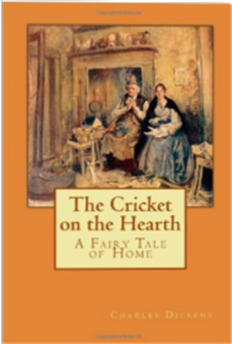 As has been my tradition for several years, only missing the year I moved to Washington, I am reviewing one of Dickens’s Christmas books for the Christmas season. I only have one left, so I’ll have to think up a new tradition in a couple of years.
As has been my tradition for several years, only missing the year I moved to Washington, I am reviewing one of Dickens’s Christmas books for the Christmas season. I only have one left, so I’ll have to think up a new tradition in a couple of years.
The Battle of Life begins with a section about a battle that was fought years before on the site of the main characters’ home. I thought that since Dickens’s Christmas books often involve ghosts, this battle might be the source of a ghost story, but no. Apparently, this section is just an extended and rather laborious metaphor.
In any case, we soon meet the Jeddlers, who are celebrating some important birthdays. It is the birthday of Marian, the younger and more beautiful Jeddler sister, who is provisionally engaged to Alfred Heathfield, Dr. Jeddler’s ward. It is also Alfred’s birthday. This day he will be released from his wardship and travel to the continent to study medicine. In three years, he will return and marry Marian, if they are both so inclined. There is something odd, however, in the way in which Marian bids farewell to her sweetheart, looking at her sister Grace all the while.
 In the second part, the plot thickens. It is three years later. Alfred is due back, but another player has entered the scene. Michael Warden has ruined himself with his spendthrift ways and meets with his solicitors, Snitchey and Craggs, to discuss how he might save himself. Snitchey and Craggs have already appeared as Alfred and Dr. Jeddler’s solicitors and provide some of the typical Dickens comedy, along with their wives. During this meeting, Warden states his intention of eloping with Marian Jeddler. Could Marian be contemplating an elopement just when Alfred is due home?
In the second part, the plot thickens. It is three years later. Alfred is due back, but another player has entered the scene. Michael Warden has ruined himself with his spendthrift ways and meets with his solicitors, Snitchey and Craggs, to discuss how he might save himself. Snitchey and Craggs have already appeared as Alfred and Dr. Jeddler’s solicitors and provide some of the typical Dickens comedy, along with their wives. During this meeting, Warden states his intention of eloping with Marian Jeddler. Could Marian be contemplating an elopement just when Alfred is due home?
This novella about two sisters each of whom is ready to sacrifice her own happiness for the other is a little predictable but makes a touching, if slightly sappy, story. As one of Dickens’s Christmas books, I would rate it below A Christmas Carol but above the others, especially The Chimes. I have one more to read, and next Christmas will show how well I liked it.










